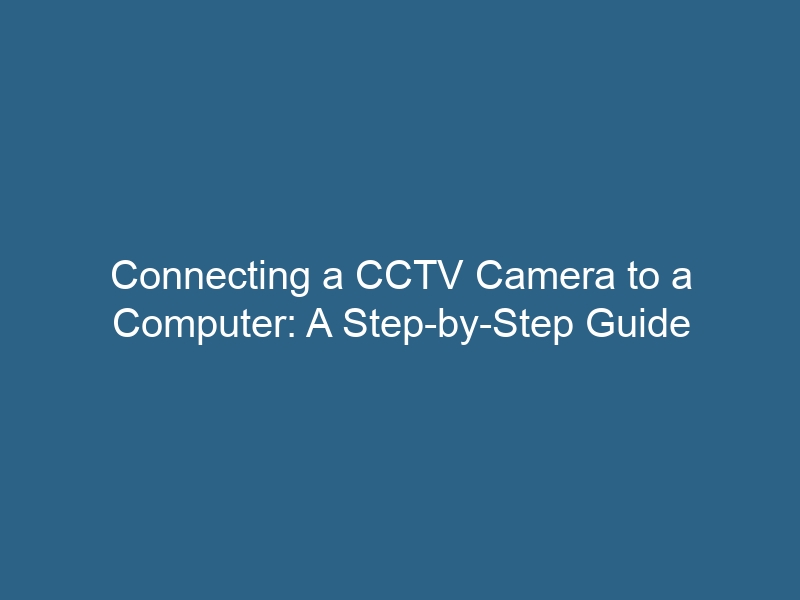Quck answer
To connect a CCTV camera to a computer, follow these simple steps:
1. Determine the type of CCTV camera you have: analog or IP. Analog cameras require a video capture card, while IP cameras can connect directly to the computer’s network.
2. Install the necessary software or drivers for your camera. Most CCTV cameras come with their own software or drivers that need to be installed on the computer.
3. Connect the camera to the computer using the appropriate cables. For analog cameras, use a coaxial cable and connect it to the video capture card. For IP cameras, connect the camera to the computer’s network using an Ethernet cable.
4. Configure the camera settings. This can be done through the camera’s software or through the computer’s control panel.
5. Test the connection by opening the camera’s software and checking if the video feed is displayed on the computer screen. Adjust the settings as needed.
By following these steps, you will be able to connect your CCTV camera to a computer and monitor the video feed.
When it comes to connecting a closed circuit television (CCTV) camera to a computer, one of the main challenges is the distance between the camera and the computer. For example, if you want to monitor activity at your front door, you would typically mount the camera in the hallway, which is nowhere near the computer in the den. However, there is a solution to this problem: using a home-wiring network known as a powerline network.
Step 1
First, choose the position for your camera. It’s important to select a location that is not directly facing a light source. Make sure the camera is in a shaded area and that the subject area is well lit. Additionally, ensure that the camera’s frame captures the desired subject, such as a door. Refer to the user manual to determine the camera’s range for capturing a full image of a person who is six feet tall. Note that this range is often only 2.5 meters at night when using a day/night camera.
Step 2
Next, decide how you will mount the camera. One option is to use window suction mounts, which are convenient and easy to install.
Step 3
Now, plug the supplied receiver into a wall socket near the computer. This receiver and the accompanying cables are the interface between the computer and the powerline network. Connect the receiver to an available USB port on the computer.
Step 4
Install the software provided with the camera kit on your computer. Locate the disk that came with the kit and insert it into the computer’s disk drive. Follow the prompts from the installation wizard to complete the software installation. The prompts will guide you through setting up a remote viewing account, which allows you to view camera images over the internet. The system will also be tested, and you will be prompted to connect and name the camera. At this point, return to the camera.
Step 5
Connect the camera to its power supply, and then plug the power supply into the nearest electrical outlet. The home’s wiring will be used to transmit the camera’s signal to the computer.
Step 6
Go back to the computer and continue following the wizard’s instructions. Identify the camera within the software and assign it a name.
Step 7
Lastly, focus the camera. You will need assistance for this step. One person should be at the camera while the other views the camera’s image on the software’s home screen.


